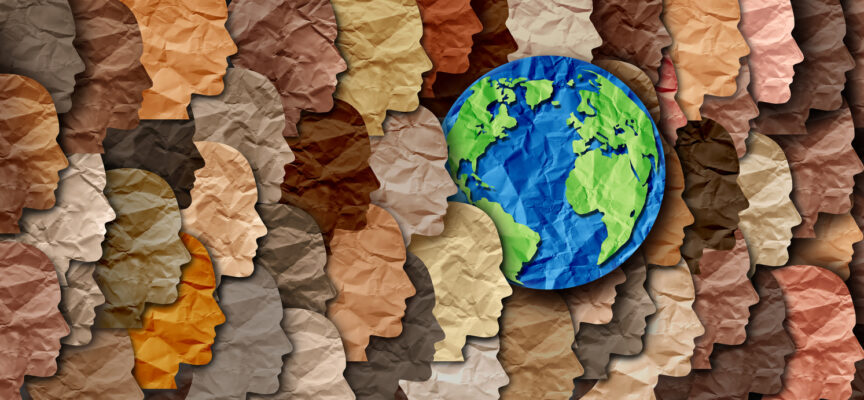When it comes to American politics, there are so many ironies in the fire. And none are more pronounced than the fact that the gains of the Civil Rights movement are being undone by many of its successors who have bought into Critical Race Theory and Intersectionality.
What is Critical Race Theory?
In the mid-twentieth century, black sociologist W. E. B. Du Bois argued that the Western concept of “race” is a social construct created to maintain white privilege and supremacy. This is partly true: it is not clear why Westerners have grouped people into “races.” Race and racism, as understood today, probably did arise as social constructions to morally justify colonialism and the slave trade.
Yet, proponents of Critical Race Theory (CRT) go much further. They argue that racism is deeply and pervasively present in all of America’s social sectors and cultural spheres, and they engage in political activism by focusing on microaggressions, hate speech, safe spaces, cultural appropriation, and “whiteness.” Many proponents are black nationalists who seek resegregation.
How did Critical Race Theory emerge as an ideology?
Du Bois was not a Critical Race Theorist. However, beginning in the 1970s, certain theorists drew upon Du Bois’s writings to create the ideology we now know as CRT. Critical Race Theory first emerged from within the legal realm, seeking to identify and expose race problems for the purpose of revolutionary change; legal theorist Derrick Bell is the forefather of the movement who argued that whites only gave recognized black rights when it was in their own best interest to do so.
During the late 1980s and 1990s, female critical theorists bell hooks, Audre Lorde, and Patricia Hill Collins turned CRT’s guns against patriarchy, white supremacy, and the “whiteness” of mainstream feminism. Then, in the late 1990s and 2000s, Patricia Williams, Angela Harris, and Kimberlé Crenshaw drew upon CRT to found what is now known as Intersectionality Theory. These Intersectionality Theorists focused on analyzing the many layers of identity and many types of experience human beings have. Further, they turned CRT in a “determinist” direction, arguing that one’s intersectional position in society determines the way we understand the world and our place in it.
What are the main tenets of today’s Critical Race Theory?
In the reader Critical Race Theory, Richard Delgado and Jean Stefancic summarize CRT’s tenets. CRT argues that:
- Racism is the pervasive everyday experience of American people of color.
- White supremacy is woven into America’s social and cultural system, and it benefits white people; thus, color blind policies are not very helpful.
- Anti-racists must therefore reject traditional categories and traditional ways of speaking, and take an Intersectional point of view to combat the social constructions of race and racism.
- Anti-racists must espouse standpoint theory, the view that minority status alone grants competence to speak about race and racism.
What is Intersectionality?
Legal theorist Kimberlé Crenshaw coined the term “intersectionality.” In a now-famous essay, “Mapping the Margins,” she outlined an agenda that would become the contemporary Intersectionality movement. In it, she urged thinkers and activists to resist the desire to treat all people equally, and instead embrace a type of identity politics that affirms socially constructed identity categories for the sake of political activism.
Crenshaw argued that the agenda of anti-racists should be to discern the power hierarchies present in traditional society and culture and show how those hierarchies are inherently oppressive for minorities.
She argued that we must adopt a new way of thinking, recognizing the complex layers of discrimination that exist, and the myriad categories of people who experience oppression.
When reading Intersectional Theorists, the reader might find herself dizzy; Intersectional theory undertakes a complex analysis of identities; it offers society a truly nuanced complexification of society. Yet, underneath the nuanced complexities, it is quite simple. Helen Pluckrose and James Lindsay summarize Intersectional Theory well: “Nothing could be simpler. It does the same thing over and over again: look for the power imbalances, bigotry, and biases that it assumes must be present and pick at them. It reduces everything to one single variable, one single topic of conversation, one single focus and interpretation; prejudice, as understood under the power dynamics asserted by Theory.”
How is Social Justice Theory related to Intersectionality?
Intersectionality posits many categories and subcategories which compete with, and even contradict, one another. These many categories keep Intersectionalists in business, arguing with one another and yet still uniting the Theoretically oppressed groups into one overarching group. Thus, under this view, any person who truly cares about Social Justice® must presuppose Intersectionality’s assertion that hierarchies and oppression exist everywhere and that liberalism is a failed solution.
In everyday discourse, intersectionality is used to “cancel” people who do not conform to Intersectional policing. Intersectionality is generally divisive, pessimistic, and cynical. Often, it fosters paranoia and hostility. Jonathan Haidt notes that intersectionality is thus the reverse of cognitive behavioral therapy because, instead of making its participants more mentally and emotionally healthy, it makes them less healthy. It is also the reverse of a support group mentality—such as AA’s 12 Step program—because instead of encouraging individuals to cast aside resentment and face life on life’s terms, it fosters resentment, grievance, and judgment.
What should Americans think of Critical Race Theory and Intersectionality?
CRT and intersectionality assume that racism is systemic and permanent, and that the main problem is that white people fail to see that. Many CRT proponents argue for black nationalism and resegregation instead of human rights and cooperation. Ironically, it reinforces the socially constructed category of race, inflames racism, and is aggressive. It also endorses any interpretation or claim made by marginalized individuals. By seeing nearly everything as racist, it is likely to be counterproductive in weeding out real racism, and to undermine helpful forms of antiracist activism. By obsessing on race, it is reintroducing and reinforcing the once-taboo practice of evaluating people by race.
For a more extensive analysis of CRT and Intersectionality from a Christian theological perspective—arguing that CRT, at least at the popular level, is an idolatrous ideology—click here to read this article, originally published at Public Discourse.
Subscribe
Never miss a post! Have all new posts delivered straight to your inbox.








I have a couple questions.
What are some helpful readers/primers to get an understand of these topics? I read your article in the Public Discourse (PD).Is Delgado and Stefanic’s book the best option? Does it give the history of the belief and trace it out into its present and ethic?
Another question, in this post you state, “Race and racism, as understood today, probably did arise as social constructions to morally justify colonialism and the slave trade,” and in your PD article, you juxtapose CRT’s definition with the Bible’s definition. The difference is one is based on relative “experience” and the other on objective, moral, and Biblical law. Respectfully, how can the origin of “race” be rooted where you state? Wouldn’t this mean the point of origin would be during the colonial period and be seated primarily with Western societies? Doesn’t this nullify any other society where distinctions are drawn? What about ethnic cleansing on other continents without Western influence? On a more practical level, is this distinction inherently evil? As people, we use descriptive language to differentiate this from that or they from them all the time. It’s seen in Scripture too. In a nutshell, doesn’t this statement swallow the hook of CRT’s core belief?
BC, thank you for your thoughtful response and questions. Yes, it’s probably best to start with Delgado and Stefanic. As for your question about the category of “race” being a recent development, I think you and i agree. What i didn’t make clear in the article is that, historically, people have always made distinctions and drawn lines. For example, in the Bible, we see that ancient people made distinctions based on tribe, language, people, group, and nation. Yet, “race” (e.g. the “black race”) is a more recent and loaded category. I hope that makes sense. Thank you for interacting!